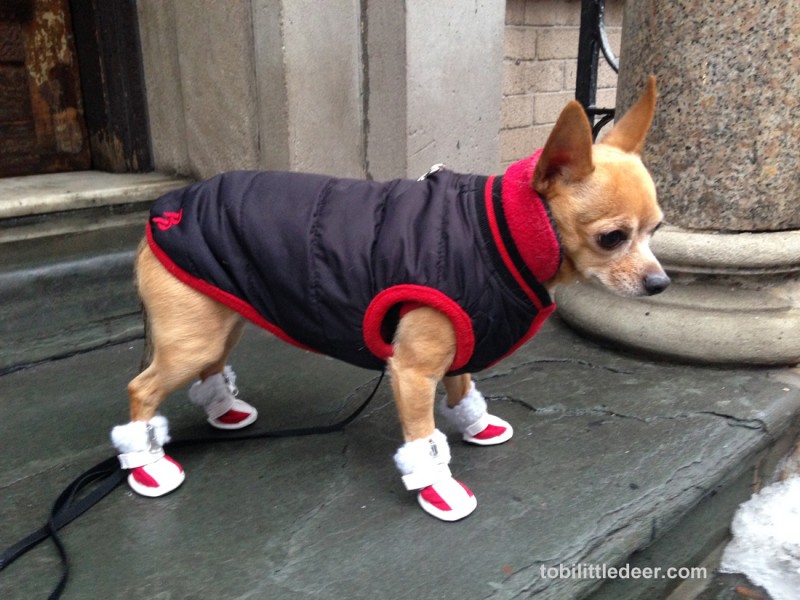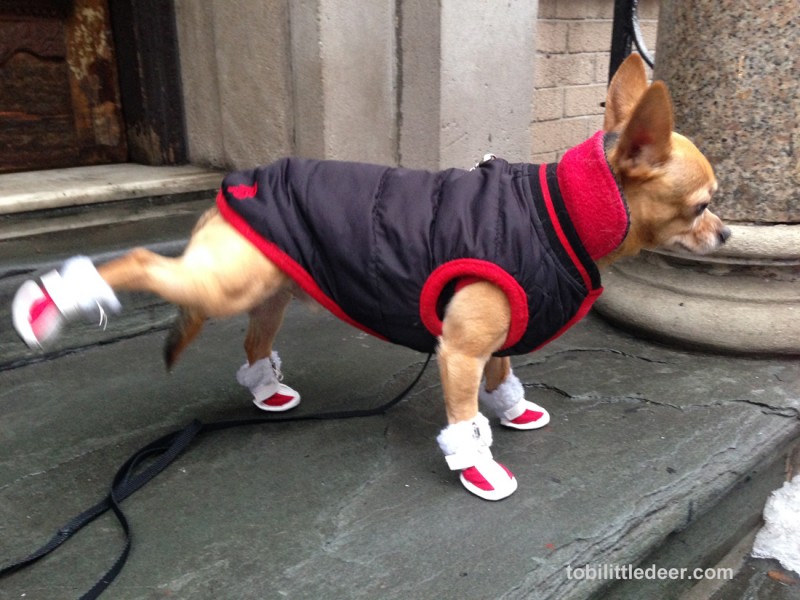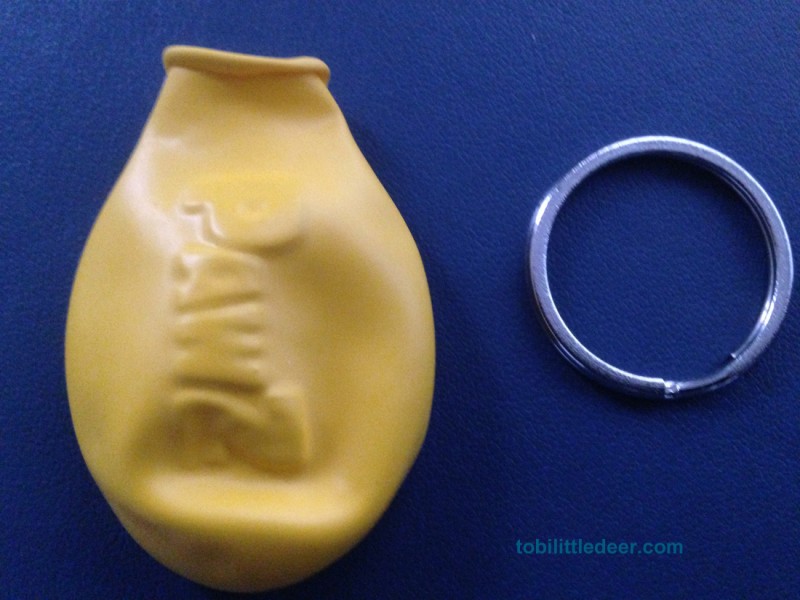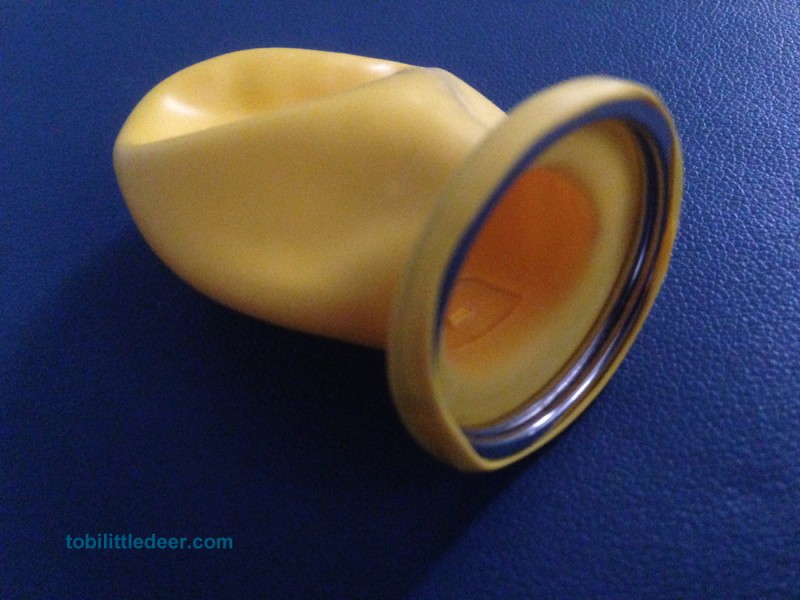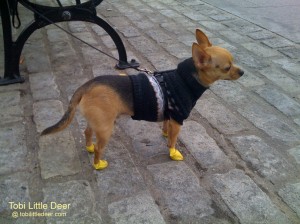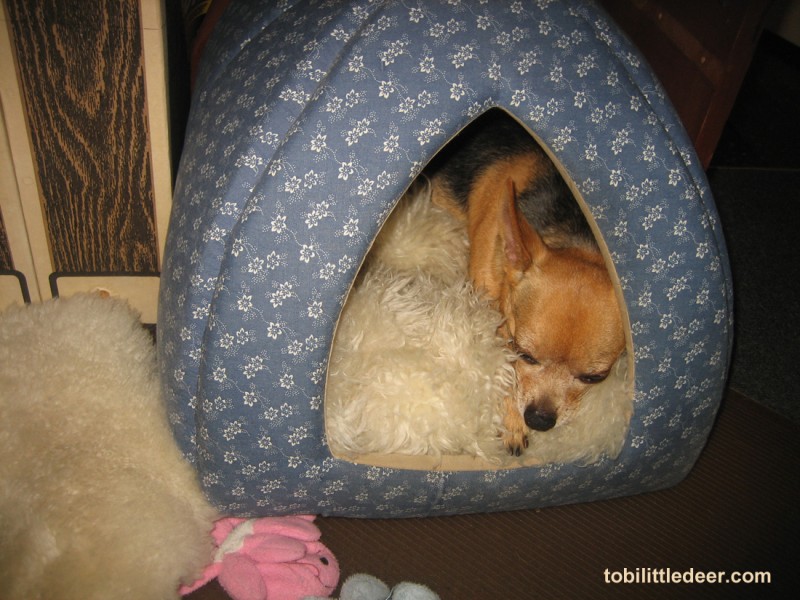
It’s not unusual when I accompany Ted into the bank or into a neighborhood store that the bank greeter or store owner looks at Ted and politely asks, “Do you mind if I give your dog a treat?”
Ted likes the attention I get, and, smiling, answers just as politely, “I don’t mind,” forewarning the person, “I doubt he’ll eat it, though. He’s not used to dog food.”
So I’m offered the treat—by hand first. I sniff it, and of course don’t take it. So the person sets it on the floor for me, and steps back. I sniff it again; I’ll give him that much before I turn away. Ted explains, “He’s not familiar with dog food. When he was a puppy he was poisoned by dog food and almost died. Ever since then, I’ve fed him only human food.” That’s the quick story. Here’s the longer one:
When Ted first brought me home as a puppy, he found me to be a very finicky eater. He tried every type of dog food, and grew quite concerned. I’d approach my dish, smell it, maybe eat a bite or two, and then ignore it. I simply didn’t care for most of it. Sometimes the food was just boring; sometimes there were traces of bad smells hidden under the surface smell. Finally, Ted found one thing I liked, chunks of “meat” in “gravy,” available under various brand names; and he bought me the best. It turned out that virtually all the brands were getting their “meat and gravy” from the same manufacturer, a company named Menu Foods.
Menu Foods happened to buy one of its ingredients, wheat gluten, from a foreign company that, to fool testing equipment, was grinding up a very hard plastic named melamine (used to make dinnerware) and lacing the wheat gluten with it. Over ninety-five pet food brands, expensive ones and inexpensive ones alike across the United States and Canada, were all buying this “meat and gravy” from Menu Foods. And everywhere, dogs and cats began to get sick with kidney failure; and many, many died. When I was barely seven months old, only half-grown, I was one of those who almost died from “meat and gravy.”
It took many months of medical treatment to save my life, beginning with IV’s into my jugular vein, which required me to remain hooked up in a cage in the hospital day and night. I’d cry and hardly would eat at all.
Ted visited me every day. He’d reach into my cage with a little food on the tip of his finger to try to coax me to eat. I’d just look at him with the IV sticking out of my neck and cry and cry. I didn’t understand. I wanted him to take me home.
The IV’s had to be repeated because soon after treatment my kidney-failure symptoms returned. I got a little better, but not enough. Eventually the doctor told Ted that the only thing that would keep me alive was routine subcutaneous hydration several times a week. That involved injecting a whole cup of fluid under the loose skin at the top of my shoulders. I was a young dog; the prospect of doing that for the rest of my life was daunting to Ted. A veterinary assistant tried to show him how, but I screamed and jumped out of her hands, with the liquid splashing all over her and Ted and none into me. Ted told the doctor that if there was no hope for cure, it would be better to just let me live comfortably whatever time remained and not put me through that.
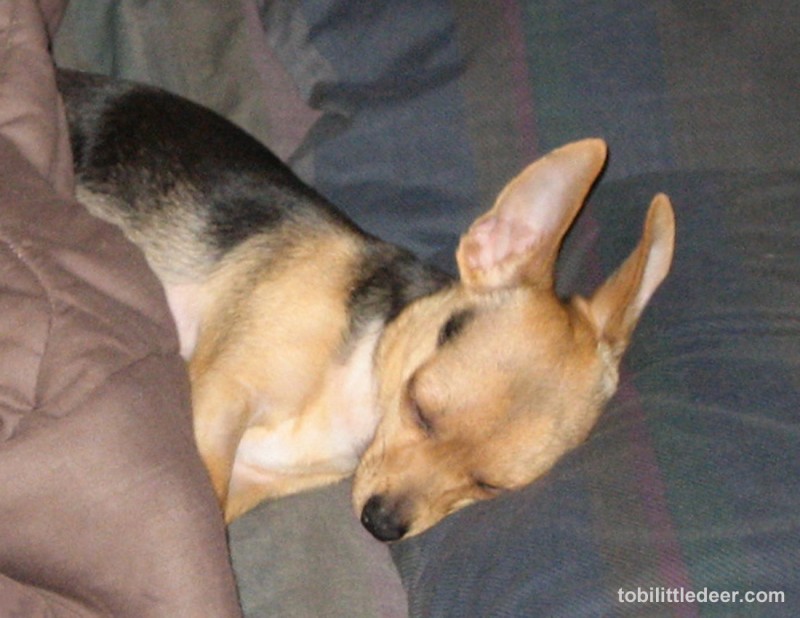
To better judge my prospects the doctor suggested an ultrasound exam to ascertain how badly my kidneys were damaged, and afterwards he carefully explained to Ted we could be “cautiously optimistic.” He clarified that Ted could expect success or failure in a matter of months. When Ted objected he couldn’t do the procedure, the doctor told him to bring me to the hospital three times a week, “and we’ll do it for you here,” he said. We did, three days a week, week after week, and I slowly got better. Then the hydrations were reduced to twice a week, and later to once a week, and finally to none at all. The veterinary assistants knew how to handle me. When I panicked and snapped at them, one held me fast and calmed me while the other got the job done without hurting me much. Ted stayed in the waiting room where he didn’t have to watch. When I came out I’d jump into his arms, and he’d try to get my harness over the huge lump of fluid above my shoulder.
The doctor says that I made it because I was such a young dog, that kidney tissue normally doesn’t regenerate, but that I was still growing so mine did. Ted felt very, very bad through it all until I started to get better.
While I was sick Ted went to the Internet to learn everything he could about the poisoning, about kidney failure, and about dog food. He found out that basically all the dog foods he researched contained byproducts that aren’t approved for human food, especially where the word “rendered” was listed in the ingredients. He was surprised how often historically one or another brand had had to be recalled. Even one recommended by veterinarians for special dietary needs had been in trouble only a year before.
Ted told the doctor that he wasn’t going to feed me anymore dog food. “But Tobi needs a balanced diet,” the doctor objected.
“He’ll get one. I eat a balanced diet,” Ted replied, “vegetables, and fish and whole grains, no processed food. That’s what I’ll feed him.” He added, “When I was a boy on the farm, we always had a dog. And nobody back then knew anything about dog food. Dogs ate what we ate, the leftovers from our table, and they were healthy.”
The doctor insisted, “You should add a vitamin supplement, then,” so Ted sprinkles a multi-vitamin for dogs into my breakfast each morning.
Items may vary in my daily meals, but my diet remains structurally the same each day. It mirrors what Ted prepares for himself—plus chicken. I guess you could call it “The Tobi Little Deer Diet.” With it I grew strong and I stay healthy.
© 2014 Woodwrit, Inc.
